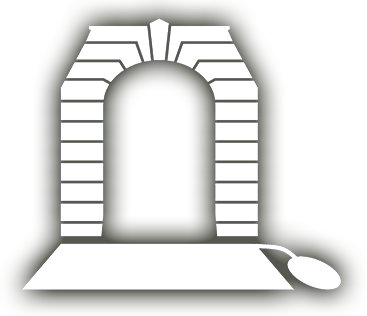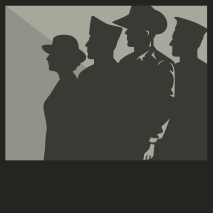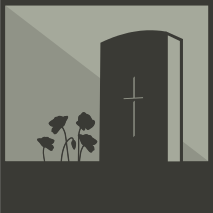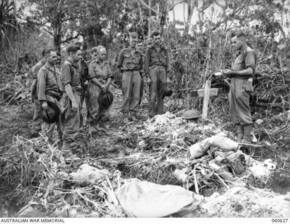GILBERT, Frank Gilmore
| Service Number: | SX8086 |
|---|---|
| Enlisted: | 6 July 1940, Adelaide, SA |
| Last Rank: | Lance Corporal |
| Last Unit: | 2nd/48th Infantry Battalion |
| Born: | Mount Barker, South Australia, Australia, 13 June 1917 |
| Home Town: | Nairne, Mount Barker, South Australia |
| Schooling: | Nairne School, South Australia |
| Occupation: | Labourer |
| Died: | 5 July 1974, aged 57 years, cause of death not yet discovered, place of death not yet discovered |
| Cemetery: |
Enfield Memorial Park, South Australia Rose Garden Memorial site. |
| Memorials: |
World War 2 Service
| 6 Jul 1940: | Involvement Lance Corporal, SX8086 | |
|---|---|---|
| 6 Jul 1940: | Enlisted Adelaide, SA | |
| 6 Jul 1940: | Enlisted Australian Military Forces (WW2) , Lance Corporal, SX8086, 2nd/48th Infantry Battalion | |
| 15 Nov 1945: | Discharged | |
| 15 Nov 1945: | Discharged Australian Military Forces (WW2) , Lance Corporal, SX8086, 2nd/48th Infantry Battalion |
A Challenging Life.
Frank was born in the Adelaide Hills town of Mt Barker on the 13th June 1917, spending his early days in Nairne where he attended school, before then working as a labourer. He had experienced quite a few challenges as his enlistment papers noted scarring on his collarbone area, chest and upper right arm. Aged 23, Frank enlisted on the 6th July 1940 and was allocated the number SX8086 in the newly formed 2/48th Battalion. He nominated his sister Norma May as his next of kin. (Frank had other relatives enlisted at similar times, Keith Gilbert SX6555 and Donald Gilbert SX7753 with both being placed in the sister battalion, the 2/43rd.)
While on pre-embarkation leave the following month, the Nairne Community farewelled seventeen young men who had enlisted from the area – all of whom had been training at Woodside. They included 20-year-old Don and Keith Gilbert, in the 2/43rd and Frank in the 2/48th. The local Memorial Hall, decorated with flags, was crowded, leaving standing room only. Singing of the National Anthem and the "Song of Australia" began proceedings, followed by speeches and the presentation to each soldier of a wallet, including a monetary note, the latter being from an anonymous donor. The local women gifted each enlistee with a parcel containing a scarf, pair of socks, mittens, shaving soap and toothpaste. Singing and musical performances followed.
Following training at Woodside, the battalion was soon aboard the Stratheden in November. Unfortunately, during the voyage Frank was admitted to the ship’s hospital before reaching the Middle East a fortnight later, in December.
While in training, soldiers found they needed to be constantly prepared for the light-fingered locals, who could ‘remove’ all varieties of equipment if not closely guarded. Frank soon found the punishment for ‘losing by neglect’ his equipment was the very strong penalty of being confined to barracks for ten days – a powerful reminder of how precious fighting gear was.
In the fierce fighting in July ’42 Frank added further scarring to his already marked body when he was wounded in action at Tobruk with shell fragments to his left buttock, causing him to immediately be transferred to the field ambulance. At the time, the troops had dug into the sand in the heat, dust, flies and fleas, where any movement attracted mortar and shell fire. It was also in these conditions that the men were urged to surrender, rather than live like rats. Ironically, this taunt did not destroy morale, rather the soldiers adopted the unofficial title of being Rats of Tobruk as a badge of humour.
Just months later in August Frank was wounded for the second time with a gunshot wound to his abdomen and right arm and was hospitalised for a fortnight. John Glenn in ‘Tobruk to Tarakan’ described Headquarters coming under intense fire as did those in the trenches. It was also a time when many acts of heroism occurred, not all were officially rewarded but they were all part of the bravery and camaraderie of the battalion. All this while facing sandstorms, primitive conditions and constant shelling.
Back home newspapers reported casualties and deaths. Frank was placed on the ‘Dangerously Ill’ list, then in December on the ‘Dangerously Wounded’. In the fierce fighting for El Alamein, in the evening an unexpected last attack had been made by the retreating German forces. John Glenn described how ‘The unexpectedness of this shell fire caught a number of men unprepared, giving us our last casualties in the Western Desert, or for that matter, in the Middle East, Private S.A. Rowe being killed, Private H.T. Jones and F.G. Gilbert being wounded.’
Back home, at the end of November, the Mount Barker Courier carried the news that Frank’s sister was informed that ‘her brother, Pte. F. G. Gilbert, has been in Egypt and placed on the dangerously ill list. He saw service in Tobruk and was also wounded in August.’ It was extremely fortunate that his 2/48th Battalion was finally heading home to Australia via Melbourne in February, ‘43.
Following brief leave, Frank and his battalion headed to Queensland to prepare to face a very different enemy in the tropical conditions of New Guinea. He arrived in Milne Bay in August, returning five months later in February ’44. His body mirrored the conditions he had endured, being treated several times for malaria, an extremity skin infection ( paronychia), pneumonia and ingrown toenail. He was initially listed on the seriously ill list and removed from this in June ’44.
By March, 45 Frank was appointed Lance Corporal and within weeks returned to Morotai and thence to Tarakan for the closing days of war. Those conditions left him with further physical challenges as he contracted painful hookworm which continued to affect his health and stamina. It was at this stage that the poignant photo was taken in Tarakan of Frank, lying exhausted on the roadside after carrying wounded men from the Sykes Feature. Finally at the end of October, 28-year-old Frank was able to leave for home, via Sydney, to be discharged on the 15th November ’45. He had served for 1,959 days.
The following year Frank worked for Geo. Chapman, Ltd., when he had a lucky escape in May from serious injury while riding horseback after stock. When his mount stumbled and fell, Frank freed one foot, but the other was jammed in the stirrup, with the weight of the horse denting the iron on to Frank’s boot. Unfortunately, the horse was a flighty one, bucking end kicking the while. The stirrup leather came away from the saddle, saved Frank from possible fatal injury, but with a bad shaking and many bruises.
Post war, Frank married and became a driver. The legacy of his service became increasingly obvious in the ensuing years, culminating in a severe assault with an iron bar on a man. Frank was 37 at the time, with the dispute being over a woman. Frank pleaded guilty, writing in a statement that he frequently suffered spasms of uncontrollable temper and was afraid of recurrences. With the case going to court, the Judge called for a psychiatrist's report, following Frank’s lawyer explaining that post war Gilbert had fallen into company that changed his character. His war service also had affected him, with a submission explaining that Frank had been at Tobruk and his service had changed him. Concern was expressed at Frank being safe to be in the community. Inevitably Frank was gaoled for nine months, but his previous good character and war service had been considered. Unfortunately, no support was mentioned to help Frank with what is now known as Post Traumatic Stress Syndrome.
Frank lived to be just 57 and died on the 5th July 1974. He was buried in the Enfield Memorial Park Cemetery. 53-year-old Joan survived for a further two months and died on the 28th September and now rests in the Rose Garden Memorial site.
Researched and written by Kaye Lee, daughter of Bryan Holmes SX8133, 2/48th Battalion.
Submitted 10 September 2025 by Kaye Lee












